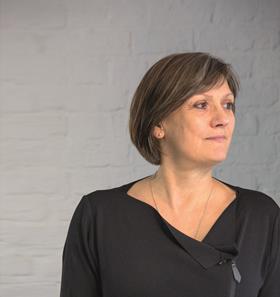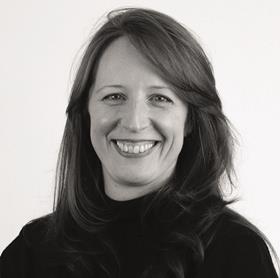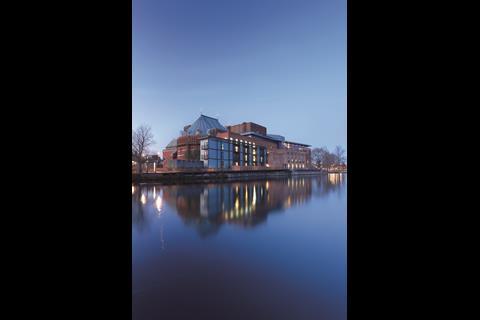Although women still account for barely a fifth of UK architects – and that figure is falling – they are increasingly leaving their mark on the built landscape. Ike Ijeh talks to leading women in the field to find out how they got where they are today, what stood in their way, and what changes they’d like to see in the industry

People used to think women did not have enough logic. Well, that is absolute nonsense. I don’t know the ego of a man or how their mentality works, but there is no difference at all in capability, not formally in terms of the buildings at least. There might be differences in women’s leadership qualities or in their ego issues, but we can design in the same way if we have the chance.”
So spoke Zaha Hadid in 2013, just three years before her untimely death. Hadid was unquestionably one of the most famous architects in the world, one of only a handful in the profession who could genuinely attest to being a household name. And she also happened to be a woman. But it was an association she was never keen to emphasise, insisting that she wished to known as an architect and not “just a woman architect”.
Hadid’s phenomenal success, as well as her forthright views on the significance – or otherwise – of her femininity, have come sharply into focus in a political and cultural climate where gender equality issues have surged to unprecedented prominence. Accordingly, next month is the deadline for companies with more than 250 employees to publish information on any gender pay gap within their organisation.
The historic measure, the result of landmark 2010 legislation that came into force only last year, promises to revolutionise UK gender pay relations – or at least hopes to do so. It also follows hot on the heels of February’s centenary of the 1918 women’s suffrage act, a watershed moment in the long struggle for equal rights for women.
As a profession, architecture does better in terms of women’s representation than some other sectors, such as engineering. In 2010 the Fees Bureau, a business data analyst for the construction industry, estimated that 19% of UK professional architects were women, a slightly higher proportion than in the US. This compares with a lowly 8% of female UK engineers, allegedly the lowest percentage in Europe. Compare this with 44% for accountancy, 45% for doctors, and 47% for solicitors.
However, even that unimpressive percentage of UK female architects has fallen since 2008, when it was 25%, according to the Fees Bureau. The UK also compares unfavourably with Europe, where some studies put the figure as high as 39%. So what then is the true experience of women architects working in the UK? Do the perennial problems of maternity leave and the “old boys network” still present significant barriers to women’s progress in the profession? Or does Hadid’s glass-shattering success indicate a level of unbridled opportunity now available to all women?
To find out, we speak to four leading UK female architects to discover what their experiences reveal about the challenges and opportunities that women in the profession still face.
Timeline of women in architecture
1671 First documented UK building by a woman Weston Hall, by Elizabeth Wilbraham (1632-1705), the first UK woman architect
1898 First woman admitted to RIBA Ethel Mary Charles (1871-1962)
1920 First woman to open an UK architectural practice Edith Hughes (1888-1971)
1927 First UK female architect to win international architectural competition - Elisabeth Scott
2004 First woman to win Pritzker Architecture Prize Zaha Hadid
2008 First woman to win Stirling prize (joint winner) Alison Brooks
2009-2011 First woman RIBA president - Ruth Reed

Karen Cook
Founding partner of PLP Architecture
In the minds of many, the skyscraper is probably the pre-eminent architectural symbol of male egotism and power. Yet what will soon become the tallest building in the City of London, the controversial 22 Bishopsgate tower, has been designed by a woman. Karen Cook, a founding partner of the London office of Kohn Pedersen Fox (KPF), has a long pedigree in skyscrapers and also redesigned the Tour First in Paris in 2007, the tallest building in France. The US-born London-based architect sees no irony in the idea of women designing skyscrapers, saying that tall buildings are a big responsibility for anyone who designs them and that she hopes to be a role model for everybody, not just women.
Cook joined KPF in 1990 after completing a master’s degree in architecture at Harvard University and worked her way up the ranks to become a partner, eventually leaving the firm in 2009 to set up PLP Architecture. “I was passionate about architecture,” she recalls about the start of her career, “and we worked all the time, seven days a week. Fortunately, along the way a few generous individuals took time to mentor me, increase my confidence and give me opportunities.” Perhaps because of this, Cook doesn’t see any barriers she faced as relating to her gender. “Everyone faces barriers: unfortunately it seems to be some people’s flawed nature to create artificial barriers for others, which makes no sense in a business environment. We perform a creative service for demanding clients. The trick is to learn and have fun and circumnavigate artificial hurdles,” she says.
However, Cook acknowledges that “it would be unrealistic to pretend that maternity leave is easy to manage in architecture or in any career; more difficult still is returning to work while juggling parenthood”. In her own practice Cook reveals that “a number of women take maternity leave and return to work part time” and that “flexibility, technology and remote working when needed” are some of the measures they have in place to support and empower female staff. And ultimately, Cook believes, these staff have a vital role to play in the architecture profession.
“[Architecture] requires listening, openness and lateral thinking. Architects also need to listen to a wide range of stakeholders, sometimes with opposing concerns, and weave regulations and many consultants’ expertise into a coherent synthesis, if possible with an artistic sensibility. Perhaps these challenges appeal to women?”

Teresa Borsuk
Senior partner at Pollard Thomas Edwards
Teresa Borsuk knew she wanted to be an architect from the age of eight. But, after withstanding pressure from her teachers at school to remould her choice into what they saw as the more gender-appropriate career of interior design, it wasn’t until her industry placement year while studying architecture at the Bartlett that she got her first taste of the construction industry’s gender politics. “My site placement was the former NatWest Tower, then the largest development site in London. Aside from this being a great opportunity to learn about the workings of the construction industry, more significantly I discovered how to manage being on a site with 500 men. It was excellent training.”
But it wasn’t sufficient to brace her against the “resistance to [her] gender” she experienced in her first London practice in the mid-1980s, a period she “ultimately found so draining” she chose to resign. She subsequently joined Pollard Thomas Edwards (PTE) and three decades later is now a senior partner at one of the UK’s most successful housing practices. While Borsuk acknowledges that prospects for women have improved since her own early experience and proudly cites the fact that “50% of PTE architects and equity partners are women”, she recommends several key measures that could help support and empower women architects in the workplace.
“There needs to be better remuneration for the whole profession which would help ease childcare and promote flexible working. We need to rethink architectural training: does it really need to take seven years to qualify? We should encourage a workplace structure that embraces both parents sharing childcare. There should be more support for staff during their family years. We need more women role models. And there should be better promotion of architecture as a career for women and greater public acknowledgement of women who have made an impact a difference.”
But while Borsuk feels that the results of the government’s gender reporting initiative will be “interesting” and provide a “real opportunity for naming and shaming”, she is keen to point out that her aforesaid goals should not necessarily be achieved by positive discrimination. “At PTE there has never been an overt policy or a deliberate attempt to create a gender balance, rather a conscious effort to have a social and cultural environment which supports equality.”
For Borsuk it is the business model rather than the arbitrary imposition of policy or targets that is the key to unlocking women’s potential within the profession. “Female traits include listening, communication, collaboration and multi-tasking, all attributes that are integral to architecture’s business model. So as traditional business models evolve to become more inclusive and meritocratic, women are undoubtedly an important asset. It’s not solely about a balanced workforce but about having a balanced approach.”

Alison Brooks
Principal and creative director of Alison Brooks Architects
Alison Brooks is one of only a handful of female architects in the UK who have eschewed the traditional corporate career ladder offered by a larger practice in favour of setting up on her own. Today Alison Brooks Architects (ABA) is one of the most prominent UK design practices and was joint winner of the 2008 RIBA Stirling prize, for the Accordia masterplan for Cambridge. Canadian-born Brooks does not frame her experiences or success through her gender but through her education.
“I went to the University of Waterloo in Ontario, which has a fantastic co-op model where most of your training takes place in practice. After leaving I came to London and worked with Ron Arad Associates for seven years before starting my own practice. The thought of rising up through established corporate ranks never really appealed to me; thanks to my education, by the time I graduated I already knew I had the training, empowerment and confidence to start my own practice.”
But even with her level of success, Brooks acknowledges that lack of confidence remains one of the biggest barriers female architects today face. “It’s amazing how much airtime men can generate for themselves, how they love the sound of their own voice. But women tend to have more of a filter as to how they’re perceived and, as a result, may be more reluctant to hold their ground. Women have a strong voice in so many ways, but we’re perhaps less good at establishing authority and leadership – even now sometimes I still suffer from it myself. We need to be more confident.”
Brooks also cites socio-cultural conditioning as a factor that can sometimes hold women back. “Women tend to engage less in the kind of lads’ culture or unconscious male bonding rituals that pervade so much of the industry. Certainly in my own experience a sense of professionalism or formality limits the extent to which I make those little personal connections that seem to come so naturally to men. Maybe it’s a cautiousness that comes from being in a minority; things might be different if I was used to sitting around a table with 10 other women rather than invariably being the only woman at the meeting.”
That said, Brooks maintains that it is difficult to make exceptions for women when it comes to the impact maternity leave can have on their careers. “It’s an inarguable fact of life that, if you take a full year out of work, it will be impossible not to lose out on some level of skills and experience that will inevitably impact your career. And if you come back on a part-time basis and others end up having to pick up the slack, what message about equality does that send? I took three months’ maternity leave with my first child at Ron Arad, but only three weeks with my second after I’d set up by myself. It’s a tough choice – I missed out on things like baby afternoons with other parents – but at the time I had no choice.”
While she welcomes the government’s pay gap initiative and argues that “the threat of transparency will be a good wake-up call”, Brooks is concerned it may “eliminate variations in pay determined by merit and performance rather than gender”. And while she acknowledges much progress for women’s equality in architecture in recent decades, she is keen to stress that it is the architectural output rather than input that matters.
“The way we communicate may be different and there are still problems with public perception: I’ve lost count of the amount of times I’ve been told that my buildings look ‘masculine’. But ultimately you can’t look at a building and say whether it was designed by a woman or a man, so hopefully this will be a conversation we won’t even need to be having in 25 years’ time.”

Gorana Shepherd
Head of urban design at Pilbrow & Partners
Before joining Pilbrow & Partners Gorana Shepherd was head of design at landscape architect/planner Gillespies and had worked for international practices including Allies and Morrison, Aecom and HOK. So she is intimately familiar with the process of working her way up through a male-dominated industry yet is reluctant to conclude that her experience was noticeably different from that of her male counterparts.
“We all have our routes through, which will depend on our interests and unique talents,” says Shepherd. “Like everyone else, I relied on my talents, and was stalled by my misgivings. I was encouraged by some amazing people, to whom I am always grateful and who have shown me how important having a good role model and a mentor is. From that point of view, having more female role models would have definitely been helpful and reassuring.”
Shepherd identifies three other principal barriers that women face: how women architects are treated in the workplace; how they are perceived by clients; and maternity leave. “In the past I’ve experienced being withheld from certain types of clients, sometimes because of their different geographical or cultural backgrounds. Thankfully such prejudices are being weeded out, and more clients are becoming women too, which greatly helps.
“It’s also my impression that having a family is the first time a women’s career will be different from a man’s. Around the time of my maternity leave I became quite interested in the idea of an ‘unconscious’ bias. It is interesting how some people will have it and some people won’t. But I found it distinctly unfair that people thought it was okay to compare my future actions to whatever their wife did. We are all different: do not make assumptions how a woman may come back from maternity leave. She may come back full-time or part-time; her priorities may have shifted or not – exactly the same as men who have become fathers.”
Shepherd hopes the government’s gender pay gap reporting initiative will help stem the “unconscious bias” she refers to. Her current practice – which is 35% female – already promotes flexible working and practicable parental leave policies. She suggests there is a cultural aspect to why more women aren’t chosing to be architects: “Architecture has a creative side, which probably appeals to some women. But I have spoken to women engineers who are very happy with their choice of career as, for example, engineers are a lot less prone to late working hours culture.”
































No comments yet